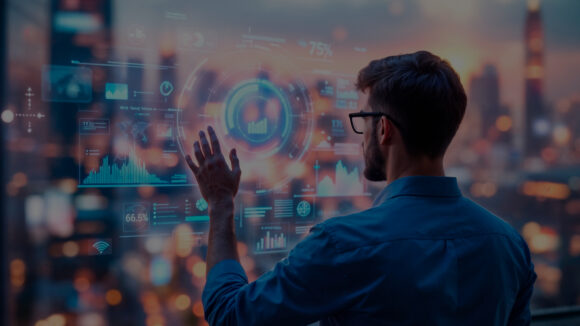Automation in agriculture is the buzzword across the world because in recent times Artificial Intelligence (AI) has been seeing a lot of direct impact in farming.
AI on Farming
AI solutions not only enable farmers to reduce wastage, but also improve quality and ensure faster market access for the products.
Advances in artificial intelligence, machine learning, and mechatronics are enabling the improvement and deployment of remote sensing technologies. They identify and manage plants, weeds, pests, and diseases. This also provides a unique opportunity to develop intelligent seeding methods for precise fertilization.
Cognitive computing has become the most disruptive technology in agricultural services as it can learn, understand, and interact with different environments to maximize productivity.

Stats
The global human population is exploding with an estimated 9.9 billion by 2050 and with food demand projected to leap 35% – 56% by that time. And mention, the climatic changes would make resources like water and farmable land scarcer.
There is not only a potential but also rapidly growing investment in agriculture:
- According to the recent reports from Forbes, by 2025 the global expenditure on “smart” agriculture, including AI and Machine Learning, is estimated to triple up to $15.3 Bn
- Research suggests that the market size of AI in agriculture should expect a compound annual growth rate (CAGR) of 20%, reaching $2.5 billion by 2026
Impact of AI on Farming
An impact assessment done on crop yield of 175 farmers within the pilot group contemplated a 30% increase per hectare. In the interview, farmers expressed their happiness on receiving advisory messages, which enabled them to effective land preparation, protect crops, and sow crops. In 2017, the pilot was expanded to more than 3,000 farmers and those who received the AI-sowing app advisory text messages had 10% – 30% higher yield per hectare.
AI Technologies
Let’s take a look at some of the most promising AI technologies transforming the agriculture sector.
🍓 Fruit Picking Robot
Harvest Robotics uses a robot to pick strawberries. In just one day, the robot can pick the same amount of fruits as 30 human workers. A robot is also equipped with camera systems that will do image recognition on the fruits to figure out whether they are ready for picking.
🌿 Crop Analysis
Crop analysis is done using drone and satellite imagery. Imagine a drone flying over your crops and taking pictures of your entire field. It then does an analysis on those images to create a detailed health report. That health report tells whether the plants have been infected by any disease or whether they’re in need of herbicide.
SkySquirrel Technologies is doing exactly this. They claim to be able to scan 50 acres of fields in 24 minutes and provide a health report that is 95% accurate. Similarly, there’s a company called Farmshots, which is doing the same thing by combining drone imagery and satellite imagery.

🌱 Weed Eradication
Identifying and eradicating weeds. A company called Blue River Technology does this by fitting a camera system on the back of a tractor. As the tractor sweeps the fields, the onboard computer system that is fitted to the camera runs deep learning algorithms that are able to recognize the weeds and spray herbicide wherever it’s needed. This approach uses only 10% of the herbicides compared to the conventional method. This results in higher efficiency, less wastage, and safer produce for all of us.

⛅️ Realtime Weather Forecasting
90% of crop losses result due to weather conditions. And 25% of those losses could have been prevented by predictive weather modeling. Some of the things that affect crop yield are temperature, rain, humidity, and solar radiation. So, AI can combine the data from satellites, and weather stations to provide a better weather prediction ahead of time.
And this type of modeling can advise farmers on the best time to sew plants and harvest.

🌽 Soil Defects
Trace Genomics, a company based in California analyzes soil samples to give an idea of the types of microbes present in the soil. Based on the data, recommendations are made on what kind of fertilizers one can use to improve the quality of soil and whether soil contains any defects that need to be treated.

🌾Observing Crop Maturity
Labor spends a lot of time in Manual observation of wheat head growth stages. AI can help us in doing it with precision.
A lot of research was done on this and researchers achieved it by collecting images of wheat at different “heading” stages across a couple of years and in different situations, which made them create a “two-step coarse-to-fine wheat ear detection mechanism”.
This computer vision model outperformed human observation, with more precision and accurately identifying wheat growth stages. This means that the farmers no longer had to make daily treks into the fields to examine their crops. It is very very difficult to check the ripeness of tomatoes by hand at an industrial level.
AI can help you with that, too!

Artificial Intelligence in agriculture helps farmers to automate their farming. AI also shifts to precise cultivation for better quality and higher crop yield while using minimal resources. It is high time that big companies explore this space.
A common question we get after reading this blog is can AI replace the knowledge that farmers have always had? The answer is probably no for now, but definitely, it will be “Yes” in the near future. AI will learn the way decisions are made and improve farming practices. Technological interventions in agriculture are likely to lead to better practices and yields and improve the lives of the farmers.




